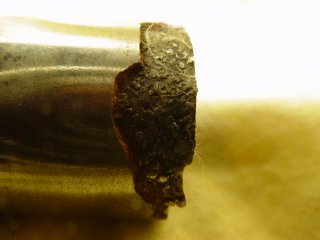Repairing pitted prop and rudder shafts is a process that's not uncommon for larger shafts, it's called cladding. An article in this month's Professional BoatBuilder magazine on the subject of shaft alignment includes a sidebar on cladding.
http://highseasyachtservice.com/wp-content/uploads/2016/02/pbb159febmar16-straightline2-highlight.pdf. I have no connection with the featured shop, other than as a journalist. It's cost effective for more larger, specialized and more expensive shafts.
This corrosion has all the earmarks of crevice corrosion, which occurs when stainless steel alloys are starved of oxygen, which frequently occurs under packing material and inside shaft logs. Less corrosion resistant stainless steel alloys such as 304 and even 316 are more prone to this, while proprietary shaft alloys such as Aqualoy 22 and equivalents are much more corrosion resistant.
You've now mated a highly corrosion resistant, and very noble on the galvanic scale, alloy, Inconel, which is great stuff by the way, and ideal for wet exhaust systems, to a less noble shaft which is probably 300 series stainless steel. The two are separated by roughly 100-170 mV in the galvanic series, which isn't a huge difference (that's good) and they use similar parent metals, nickel, chrome and iron, which is also good. The farther apart metals and alloys are on the galvanic series, the less compatible they are. The Inconel is located in the most corrosion prone area, in the shaft log, which again is also good. The less noble stainless will, however, be sacrificial to the Inconel, which will make it more important than ever to ensure you keep these rudders galvanically protected with zinc or aluminum anodes, either attached to the rudders directly or via a bonding system, which is also connected to sacrificial anodes. I've never seen a stainless-alloy shaft cladded with Inconel, however, in this welder's world and line of work it maybe common. In marine cladding the goal is to choose a weld material that is as close to the shaft alloy make up as possible.
As an aside, any stainless steel alloy that is welded must be of the low carbon variety, denoted by an L suffix, such as 304L or 316L. Welding stainless steel alloys that are not low carbon results in a phenomenon known as carbide precipitation or weld migration, which in turn produces a corrosion prone perimeter around a weld, this can often be seen as a "halo" of rust around a weld. I've seen many stainless steel tank failures that were the result of carbide precipitation.
I'm very reluctant to use graphite packing in any seawater application. Graphite is the most noble "metal" on the galvanic series, above even platinum, titanium and Inconel, which means when it is in contact with these or virtually any other metal, and immersed in an electrolyte (seawater in this case) the other metal will be anodic or sacrificial, and it will corrode. Conventional packing, particularly for rudder shafts which move little and never get hot, is more than adequate.




